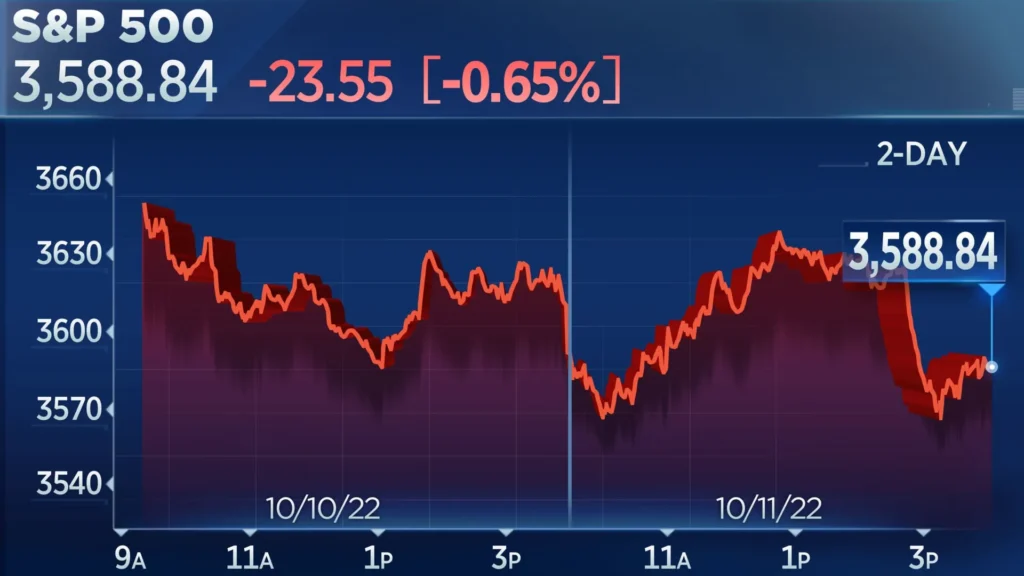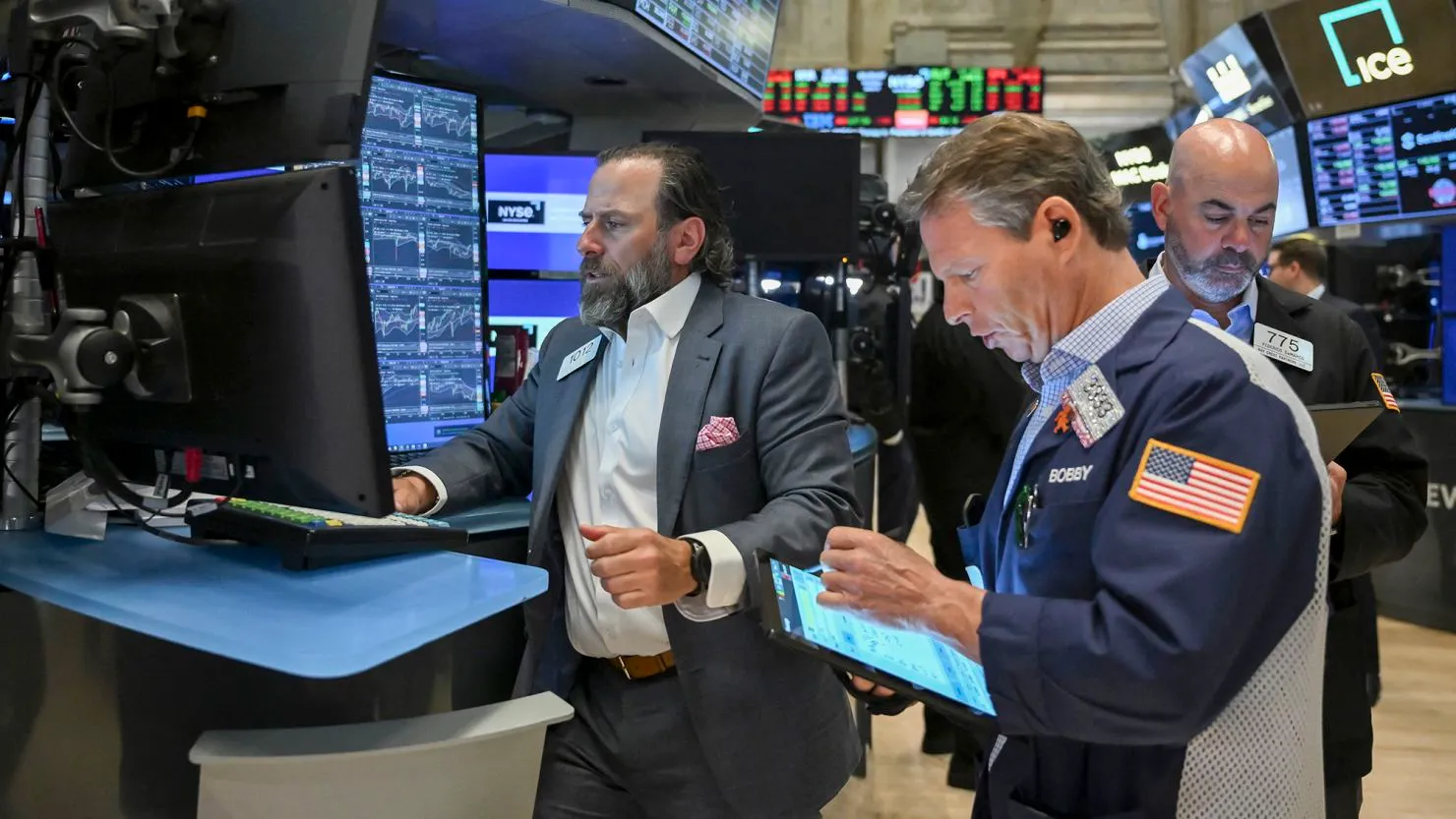The U.S. stock market continues its impressive rally as the Nasdaq Composite surged to a new record high, and the S&P 500 hovered near its all-time peak, reinforcing investor optimism around economic resilience, AI-driven tech growth, and the prospect of interest rate cuts by the Federal Reserve. The bullish momentum has energized markets, drawing global attention to Wall Street’s extraordinary performance in 2025.
This milestone highlights the strength of technology stocks, particularly those tied to artificial intelligence, cloud computing, and semiconductors, as well as broader confidence in the U.S. economy. Despite lingering concerns over inflation and geopolitical risks, the market’s trajectory suggests that investor sentiment is leaning toward sustained growth.
Nasdaq Hits Historic High
The Nasdaq Composite, heavily weighted with technology and growth stocks, reached a new all-time high, driven primarily by stellar performances from:
- Nvidia
- Microsoft
- Apple
- Amazon
- Alphabet (Google)
These tech giants have seen their valuations surge as investors pour capital into companies leading the AI revolution, cloud infrastructure expansion, and enterprise software transformation. Nvidia, in particular, has continued to soar thanks to its dominant position in the AI chip market, with strong earnings and forecasts fueling investor enthusiasm.
The Nasdaq’s performance signals not just a sector-specific rally, but a broader shift in how investors perceive innovation-led growth in an increasingly digital global economy.

S&P 500 Nears Peak
The S&P 500, a benchmark for the broader U.S. stock market, edged closer to its previous all-time high, boosted by a strong earnings season, improving economic data, and the Federal Reserve’s increasingly dovish tone.
Sectors contributing to the rally include:
- Information Technology
- Consumer Discretionary
- Communication Services
- Healthcare
Energy and industrial stocks also posted modest gains, though defensive sectors like utilities and consumer staples lagged amid reduced recession fears. The rally is being described by analysts as “broadening,” with more sectors joining in after years of tech-heavy leadership.
Dow Jones is Also in the Green
The Dow Jones Industrial Average, though more muted in its gains compared to the Nasdaq, also showed positive momentum. While the index’s composition is less tech-focused, notable contributions came from:
- UnitedHealth Group
- Goldman Sachs
- Caterpillar
- 3M
This demonstrates a mix of both growth and value stock participation, suggesting that investors are not only betting on speculative future profits but also backing companies with strong balance sheets and cash flow.
What’s Fueling the Rally?
1. Federal Reserve’s Interest Rate Outlook
Investors are pricing in at least two rate cuts in 2025, with expectations growing that the Fed could begin easing as early as the third quarter. Slowing inflation and steady job growth have strengthened the case for monetary policy to support expansion.
The Fed has recently signaled a shift in tone—from “higher for longer” to more data-dependent and flexible guidance. This has soothed bond markets and prompted a rally in risk assets.
2. AI and Tech Innovation
Artificial intelligence remains one of the biggest drivers of market enthusiasm. Companies across all industries are racing to integrate AI, leading to massive capital investments in:
- AI chips
- Machine learning platforms
- Cloud infrastructure
- Enterprise automation
Investors view this as a technological inflection point akin to the internet boom or the rise of smartphones.
3. Strong Corporate Earnings
Recent earnings reports have been better than expected, with companies managing costs effectively while growing revenue. Key metrics like operating margins, free cash flow, and forward guidance have remained solid, dispelling fears of an imminent downturn.
Notably, mega-cap tech firms have delivered blowout earnings, and small-cap and mid-cap companies are also beginning to outperform, which may indicate broader economic strength.
4. Resilient Consumer Spending
Despite elevated interest rates and sticky inflation in sectors like housing and healthcare, consumer spending has remained robust. This is especially true in services, travel, and discretionary goods.
Retailers such as Costco, Target, and Walmart have reported steady demand, even as consumers become more value-conscious.

Global Market Implications
U.S. equity performance continues to influence global markets, with foreign investors increasing their exposure to American equities. This trend has strengthened the U.S. dollar, despite the expectation of lower rates ahead.
Emerging markets are also benefiting from increased risk appetite, though capital flows remain concentrated in developed economies with stable monetary policy frameworks. European and Asian indices have tracked gains, though geopolitical uncertainties, such as the Russia-Ukraine conflict and China’s economic slowdown, continue to weigh on sentiment outside the U.S.
Caution Signs and Volatility Risks
While investor sentiment is bullish, analysts are warning of potential volatility ahead. Key risks include:
1. Inflation Reacceleration
Although inflation has cooled from its 2022–2023 highs, core inflation remains sticky, especially in services. Any uptick in inflation data could force the Fed to pause or delay rate cuts, rattling equity markets.
2. Geopolitical Tensions
From escalating tensions in the Middle East to ongoing trade disputes with China, geopolitical instability remains a key concern. Sudden disruptions could cause sharp pullbacks, especially in energy and defense-related stocks.
3. Valuation Concerns
With tech valuations reaching historic highs, some investors fear that markets may be overheating. Price-to-earnings ratios for leading tech firms are well above their historical averages, prompting comparisons to past bubbles.
Investor Strategies in a Bullish Yet Fragile Market
With momentum high but uncertainty lingering, investors are adopting various strategies to capitalize on the rally while managing risk:
– Sector Rotation
Traders are moving from growth-heavy portfolios to a mix of value and cyclical stocks, especially in industrials, financials, and energy, to benefit from broader economic growth.
– Dividend and Defensive Plays
Investors wary of volatility are favoring dividend-paying stocks and companies with consistent cash flow, such as healthcare and utilities, albeit selectively.
– Technology with Fundamentals
Rather than chasing every AI-related stock, seasoned investors are focusing on tech leaders with proven earnings and scalable models, balancing growth potential with stability.
Retail and Institutional Participation
Retail investors remain active, especially through platforms like Robinhood and Fidelity, but institutional players are also making bold moves. Hedge funds, pension funds, and sovereign wealth funds are increasing exposure to U.S. equities, suggesting confidence at the highest levels of capital deployment.
ETF flows have been powerful toward:
- Tech-heavy ETFs
- AI and Robotics ETFs
- S&P 500 index trackers
- Dividend and low-volatility ETFs
This diversified approach highlights the blending of risk appetite and long-term growth planning in the current environment.
Looking Ahead: Will the Rally Last?
As the second half of 2025 begins, all eyes are on the Federal Reserve’s policy decisions, upcoming earnings reports, and key economic indicators like CPI, PPI, and employment figures. If inflation continues to cool and earnings remain strong, the market may well push into uncharted territory.
That said, investors should remain cautious, diversify their portfolios, and prepare for short-term volatility even in a generally optimistic market.
Conclusion: Record Highs Reflect Optimism and Opportunity
The Nasdaq hitting a record high and the S&P 500 nearing its all-time peak mark are a pivotal moment for Wall Street. These milestones reflect a broader economic narrative — one of technological transformation, monetary easing, and resilient growth.
While risks remain, from inflation to geopolitical instability, the current momentum suggests that U.S. equities are firmly in bull market territory. For investors, this represents both opportunity and responsibility: the chance to build wealth while staying grounded in fundamentals and aware of global uncertainties.
Related Blog: 10 Ways to Scale Your Business in 2025
Frequently Asked Questions (FAQs)
Q1: Why did the Nasdaq hit a record high?
A: The Nasdaq surged due to strong performance in technology stocks, especially companies involved in artificial intelligence (AI), semiconductors, and cloud computing. Key players, including Nvidia, Microsoft, and Apple, led the rally.
Q2: What is driving the current U.S. stock market rally?
A: Several factors are fueling the rally, including investor optimism about upcoming interest rate cuts, strong corporate earnings, AI-driven tech innovation, and resilient consumer spending.
Q3: How close is the S&P 500 to its all-time high?
A: The S&P 500 is hovering near its record high, supported by gains across multiple sectors such as technology, healthcare, and consumer discretionary.
Q4: Is the Federal Reserve planning to cut interest rates?
A: While not confirmed, market expectations suggest the Fed may begin rate cuts later in 2025 due to cooling inflation and stable economic indicators.




